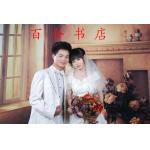
当代外国语言文学学术文库:认知心理视域下的英语课堂反馈研究
¥ 20 6.9折 ¥ 29 九品
库存4件
北京昌平
认证卖家担保交易快速发货售后保障
作者杨颖莉 著
出版社对外经济贸易大学出版社
出版时间2013-08
版次1
装帧平装
货号Y85
上书时间2024-11-13
- 在售商品 暂无
- 平均发货时间 6小时
- 好评率 暂无
- 最新上架
商品详情
- 品相描述:九品
图书标准信息
- 作者 杨颖莉 著
- 出版社 对外经济贸易大学出版社
- 出版时间 2013-08
- 版次 1
- ISBN 9787566307293
- 定价 29.00元
- 装帧 平装
- 开本 16开
- 纸张 胶版纸
- 页数 182页
- 字数 216千字
- 正文语种 简体中文
- 丛书 当代外国语言文学学术文库
- 【内容简介】
- 《当代外国语言文学学术文库:认知心理视域下的英语课堂反馈研究》文库涵盖了语言学、文学,翻译等领域.体现了包容并蓄、博采众长、学科融通的思想。进入文库的研究成果都经过精心挑选.出自学有所长的博士、学者。本套文库是各位学者的家园,是一个开放和创新的学术平台。
- 【目录】
-
Table of Contents
CHAPTER 1 INTRODUCTION
1.1 Form—focused Instruction
1.2 Feedback and Second Language Learning
1.3 Definition and Terminology
1.4 Research Questions
1.5 Outline
CHAPTER 2 THEORE丁ICAL FRAMEWORK ON THE ROLEOF FEEDBACKⅡN SLA
2.1 The Role of Input and Output in SLA
2.1.1 Definition ofTypes of Evidence
2.1.2 Krashen'S Input Hypothesis
2.1.3 Swain'S Output Hypothesis
2.1.4 Psycholinguistic Rationale for the Output Hypothesis
2.2 Attention,Awareness,and the Noticing Hypothesis
2.2.1 Schmidt'S Noticing Hypothesis
2.2.2 Conditions for''Noticing"and the Role of Instruction
2.3 Feedback and Its Functions in Second Language Acquisition
2.3.l Feedback Classification
2.3.2 Types ofEvidence that Feedback Provides
2.4 Theoretical Framework on the Relative Efficacy of Feedback
2.4.1 The Interaction Hypothesis
2.4.2 Anderson'S ACT Theory
2.4.3 Alternative Theories ofLanguage Representation
2.4.4 Skehan'S Dual—Mode System Hypothesis
2.4.5 Pedagogical Implications of the Dual.Mode System Hypothesis
2.4.6 The Distinct Functions ofRecasts and Prompts
Summary
CHAPTER 3 OBERSERVATⅡ0NAL STUDHES ON FEEDBACK
3.1 Classroom Observational Studies on Feedback
3.2 Feedback Studies in Foreign Language Context
3.3 An Observational Study on Feedback and Uptake in Chinese EFL Classrooms
3.3.1 Research Questions
3.3.2 Research Methodology
3.3.3 Results
3.3.4 Discussion
3.3.5 Conclusion
CHAPTER 4 EMPRCAL STUDIES OF CORRECTIVEFEEDBACK
4.1 GeneraI Eccct ofFeedback in SLA
4.2 Empirical Studies on the Relative Efficacy of Feedback
4.2.1 The Effect of Recasts in Second Language Learning
4.2.2 Relative Efficacy of Recasts in Comparison with Other Feedback Types
4.2.3 Differential Effects in Relation to GrammaticalStructures
4.3 Summary ofEmpirical Studies on Feedback
4.4 Rationale ofthe StudV
4.5 Research Questions and Hypotheses
Summary
CHAPTER 5 METHODOLOGLY
5.1 Research Design and Procedure
5.1.1 Research Design
5.1.2 Research Procedure
5.2 Research Context
5.2.1 Participating Teachers
5.2.2 Participating Students
5.2.3 Operationalizations
5.2.4 Target Structure
5.3 Treatment Instruments and Procedures
5.3.1 neatment Instruments
5.3.1.1 Dictogloss Activity
5.3.1.2 Question andAnswerActivity
5.3.1.3 Picture—cuedNarrativeActivity
5.3.2 Trcatment Procedures
5.3.2.1 Instructions for the Prompt Group Teacher
5.3.2.2 Instructions for the Recast Group Teacher
5.3.2.3 Instructions for the Control Group Teacher
5.3.3 Testing Instruments and Procedures
5.3.3.1 The Oral Tcst Session
5.3.3.2 TheWritten Tcst Session
5.3.3.3 Questionnaire
5.4 The Scoring Procedure
5.5 Inter-rater Reliability
Summary
CHAPTER 6 ANALYSIS AND RSUL
6.1 Analysis of Classroom Transcripts
6.1.1 Coding Categories and Procedures
6.1.2 Results ofthe Analysis ofClassroom Transcripts
……
CHAPTER 7 DISCUSSION AND CONCLUSION
REFERENCES
APPENDICES
点击展开
点击收起
— 没有更多了 —
















以下为对购买帮助不大的评价